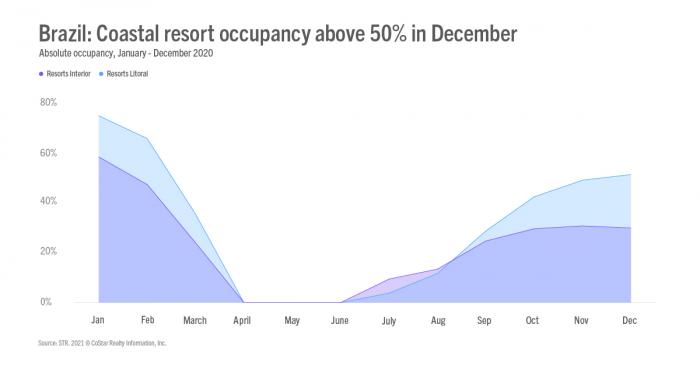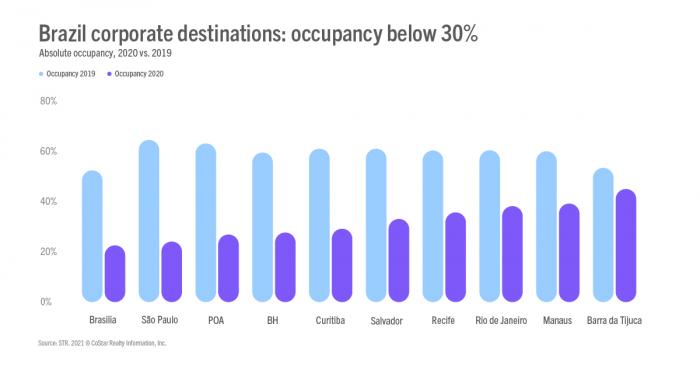Since Brazil started to emerge from COVID-19 isolation, domestic leisure demand has returned at a modest level while international and group demand are unlikely to return in the short-term restrictions remain in place. As noted in our previous analysis, preference for Latin America’s regional markets continues to be higher than urban markets. Brazil is no exception.
Now the question is, when will corporate demand come back?
Leisure destinations
While occupancy across Brazil is taking time to recover, many leisure destinations began seeing occupancy improvement in July.
Since that point, STR-defined coastal resort submarkets have seen considerable upward movement with leisure demand growing robustly in the country. In December, coastal resort occupancy was 50.1%. For comparison, interior resorts posted just a 29.9% occupancy level that same month.


